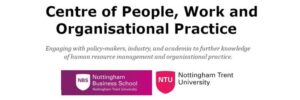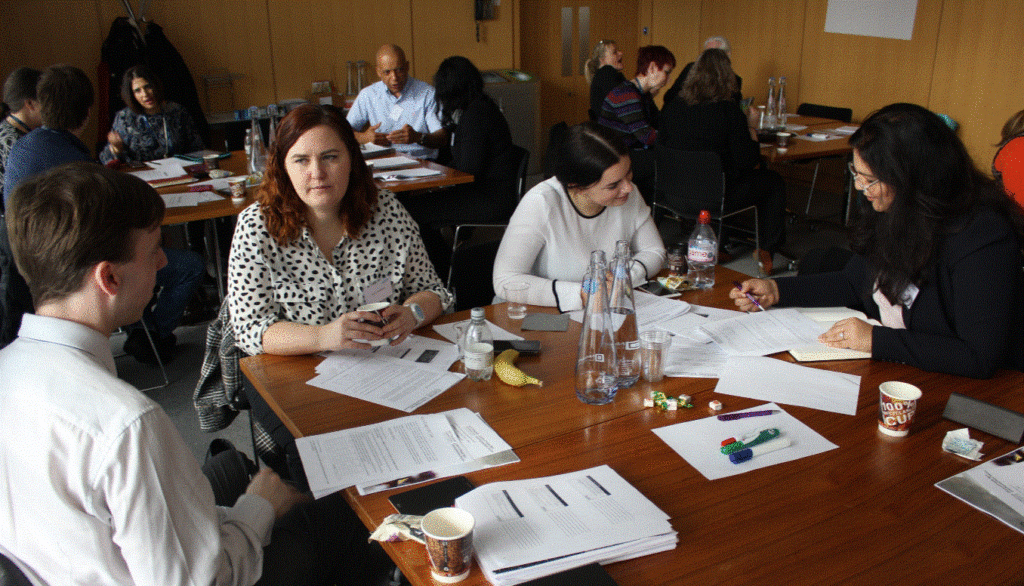Overview
At Nottingham Business School, I together with colleagues have for some years worked in partnership with the CIPD on the topic of Employee Voice. A first stage of the research involved a survey, administered through YouGov, which reached out to a cross-section of employees based in the UK (2374 individuals). In the survey, we asked about employees’ perceptions of leadership, their levels of commitment to the organization, experiences of HR, individual differences, wellbeing, and burnout.
Most importantly- indeed, central to our study- we sought to capture the extent to which people in our sample perceived that they had voice in the workplace. But here we faced a dilemma. Although the CIPD strongly believes, as we do, that voice is important for its own sake, regardless of whether it leads to improvements in organizational functioning, most studies focus on voice as a tool for positive change. We wanted to understand not just whether people felt that their suggestions and ideas helped promote better functioning (important though this is) but also if employees felt able to express their opinions, concerns, and suggestions- and for these to have an effect.
Accordingly, after searching the literature, we developed a new measure, which we labelled ‘Individual Voice’, asking employees about their essential humanity at work, probing areas such as whether ‘In my work unit, I can express my true feelings regarding my job’. We also captured in the measure whether employee believed that voice could make a difference on matters important to them.
We also measured, using a pre-existing scale, whether employees experienced ‘Organisational Voice,’ that is if people felt able to offer ‘constructive challenge intended to improve rather than merely criticise’ (Van Dyne & LePine, 1998, p. 109).
Uniquely, based on these two measures, and using this nationally representative survey, we were able to explore several important questions.
First, we wanted to understand whether the two voice constructs- individual and organisational voice- were indeed distinctive from one another- that is, whether the study does indeed tap into different ways in which people experience voice at work.
Second, we sought to understand whether the enablers of individual voice would be different from those giving rise to organizational voice.
Third, we wanted to understand what kind of effects the two voice forms might have on employee attitudes and behaviours in the workplace. Would individual voice, for example, make a difference to employees’ levels of burnout at work? Would organisational voice be especially beneficial to promoting employee innovative behaviours?
Finally, we needed to explore the reasons behind the apparent differentiation of the two forms. If the constructs are unique and different, why might this be so? What might explain any different patterns in terms of antecedents and outcomes?
In detail
We used the idea that human behaviour is regulated through two independent systems- the behavioural activation system and the behavioural inhibition system- to inform our interrogation of the data (Carver & White, 1994; Sherf et al., 2018). These systems operate separately from one another to guide goal choice and influence the degree of effort expended.
Based on this theory, we argue that individual voice arises where people are (relatively) free of threat and anxiety. Psychological safety- ‘peoples’ perceptions of the consequences of taking interpersonal risks in a particular context such as a workplace (Edmondson & Lei, 2014) is likely to be especially important for individual voice because it creates an atmosphere when discussion can be opened to cover areas that stand out for the employee.
On the other hand, for organizational voice to occur, people need to be clear that speaking up will lead to an improved situation- this behaviour is ‘activated’ towards a positive end result. One powerful activator is the line manager. Where the line manager actively solicits voice, people are likely to respond with their suggestions for improvement (but less likely to talk about their individual concerns). Line manager solicitation of voice- the efforts made to encourage people to speak up, make suggestions and effect change- is likely to be a key predictor of organisational voice.
There are consequences too arising from the two voice forms for employee attitudes and behaviours. How people feel about work, their levels of commitment to the organization, and the extent to which they embrace creativity and innovation in their daily tasks- are all linked with the form of voice they experience. Our work has only just started to explore the antecedents and effects of the two voice forms.
Please see the following links for more details:
CIPD’s Guide to group voice channels
CIPD’s guide to individual voice channels
CIPD’s practical advice for employers and HR practitioners
Employee voice helping organisations manage employee relations in new and emerging workspaces.
Summary and next steps
For too long, we have assumed that only one voice form- that focused on improving the organization- is the only one that matters. This research uncovers that there is a neglected voice form – individual voice- which highlights that people have distinct and unique personalities, that they value being listened to, and like to believe that what they say has the potential to effect change, even if this is not directly related to improving practice for the organisation.
Right back to when we first presented our results at an Engage for Success event held at NBS, well before the pandemic struck, HR and Engagement practitioners have wanted to explore the implications of the insights arising from this research for practice.
In subsequent discussion with people specialists, including our recent presentation to the Scottish Employment Relations Network, it’s clear that those working in the HR space have wanted to know how they might reflect the notion of individual voice, as well as organisational voice in their policies and practice. One key factor is supporting line managers as they reward, encourage, develop and assess those who report to them.
We look forward to sharing further details from our Voice project as they emerge.
Please get in touch if you are interested in participating in this project and/or if you would like to share good practice from your organisation.
Professor Helen Shipton: [email protected]
Dr Nadia Kougiannou: [email protected]






